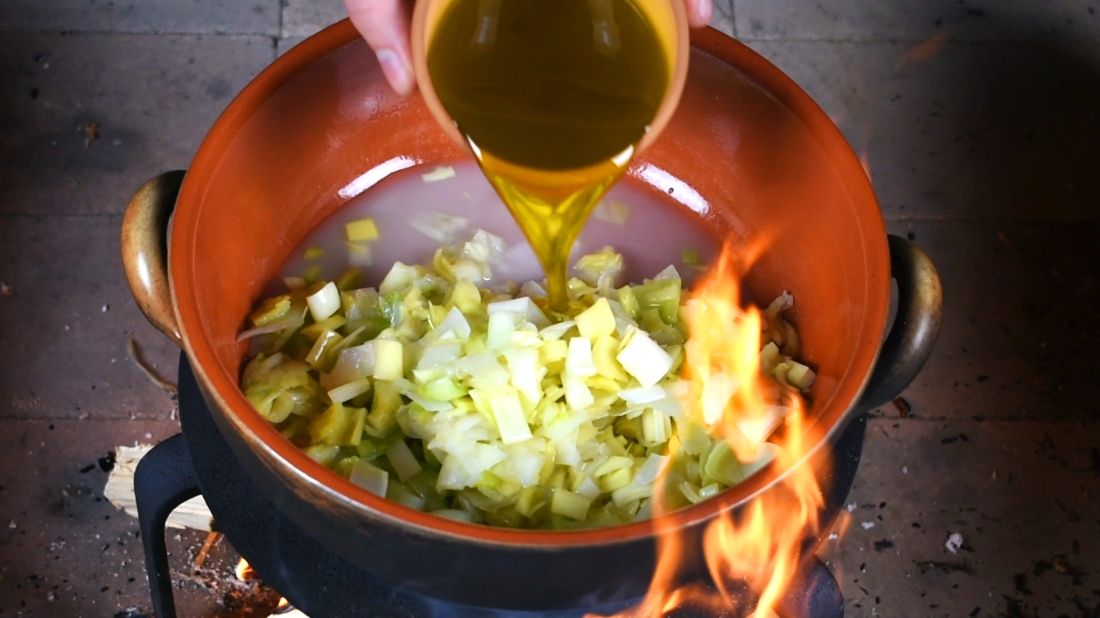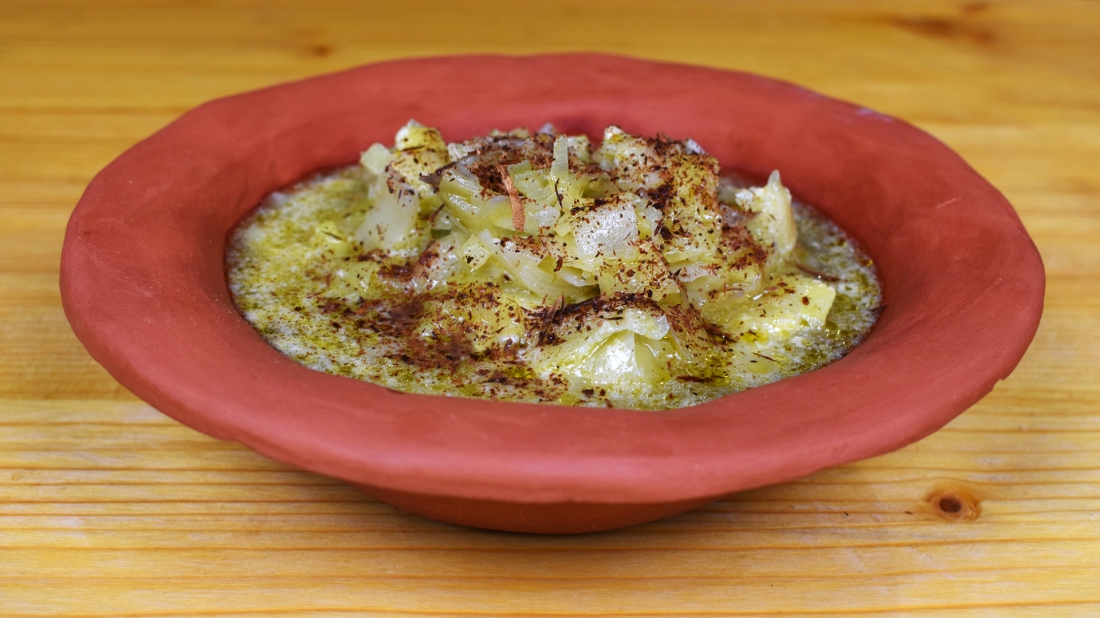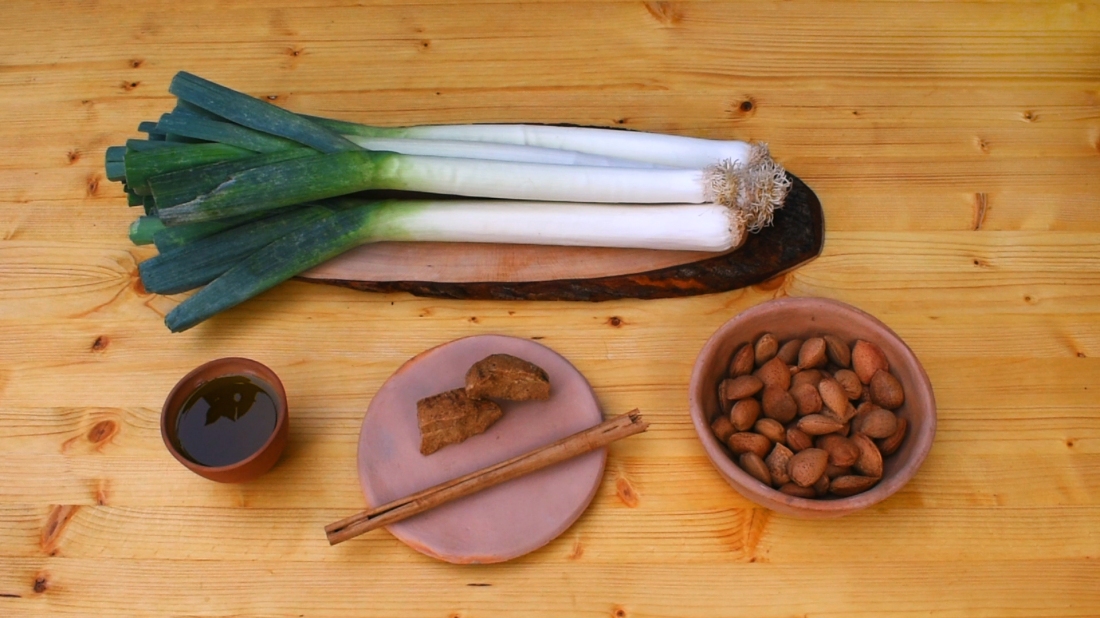The time of the year during the Middle Ages and Renaissance is divided between fat and lean days: days in which people can eat meat, dairy products, and eggs in opposition to the ones in which people are not allowed to for religious reasons. At the end of the Renaissance, the forbidden food is generally limited to meat, with many concessions to milk and cheese, as we can see reading the lists of courses served at the banquets during the lean days. Fridays and Lent are always lean days; other days of fast change depending on the historical period and the place.
Differently from the habits of the Antiquity, in the Middle Ages fish is considered less nutritious and tasty than meat, and it is the food par excellence during the lean days. In the same way, olive oil substitutes lard or cured pork fatback, and almond milk is used instead of regular milk.
Today we prepare a recipe from the Registrum Coquine, a cookbook written in Latin by Johannes von Bockenheim, a German cook who worked in Rome at the court of Pope Martin V in the 15th century. In a similar way as the Liber de Coquina, the oldest Italian medieval cookbook, this text suggests various recipes to a specific social class or nationality, sometimes with a (probably accidental) comical effect, for example, when he considers some recipes particularly suited to pimps and prostitutes.
The recipe we chose this time is recommended for peasants and rustics, for once prepared just with vegetables (but there is also a fat version with meat broth), simple to prepare but loaded with flavor.
To cook a complete lean meal, we suggest pairing it with a fish course, for example, clams, red-mullet soup, or sea bream, accompanied by walnut bread.
Below, you find a note about the ingredients, the original recipe, and our translation into English. Enjoy!
Ingredients (for two plates)
4 leeks
100 gr almonds
brown sugar
olive oil
coarse sea salt
cinnamon
Method
Grind the cinnamon and pound the sugar in the mortar. To prepare the almond milk, grind the almonds and dilute with water, then strain them with a cloth to collect the liquid.
Parboil the leeks for 2 or 3 minutes, then mince them.
Add in a pot the leeks, olive oil, almond milk, two pinches of sugar and one pinch of coarse sea salt. Cook for about ten minutes, then serve still hot sprinkling with ground cinnamon.
Note about the ingredients
If you buy almond milk instead of preparing it, pay attention to chose one made just with almonds and water.
We are using here brown sugar, but the author does not specify what kind to use. Being this recipe meant for rustics and peasants, however, we considered brown sugar (less expensive and used mainly by common people, but considered less nutritious and generally avoided in the high-end cuisine) more suitable.
If you want to prepare the fat version, use a broth made with beef, chicken, or capons (the most common during the Middle Ages) and seasoned with spices (for example, black pepper, cloves, nutmeg, and cinnamon). In this case, we suggest substituting olive oil with lardo (cured pork fatback), melting it in the pot before adding the other ingredients.
Original text
Ad faciendum ministrum de porro pro rusticis et villanis. Recipe porrum album et lava eum bene et fac eum modicum bulire. Et trita eum cum cultello, et tempera eum cum lacte amigdalorum et modico oleo oliuarum et mitte intus zucharum cum sale, tunc mitte superius cynamomum. Si est extra [quadragesimam] potest fieri cum bono brodio grasso cum diversis carnibus et erit bonum pro rusticis.
Translation
To make leek soup for rustics and peasants. Take the white part of the leek, clean it well, and make it boil for a short time. Then, mince the leeks with the knife and dilute with almond milk, adding a little olive oil, sugar, and salt. Sprinkle the soup with cinnamon. In the fat days, you can use a good fat broth prepared with different meats. It will be good for the rustics.
Ancient Vegetable Recipes Playlist
Medieval Quail Stew with Coconut VIDEO
Medieval Chicken Pie VIDEO
Medieval Green Ravioli VIDEO
Medieval Walnut Bread VIDEO
Medieval Lasagna VIDEO
Medieval Lamb Stew VIDEO
Medieval Quails with Sumac VIDEO
Medieval Sweet and Sour Sardines VIDEO
Medieval Trouts with Green Sauce VIDEO
Medieval Clams VIDEO
Medieval Sea Bream VIDEO
Medieval Roast Lamb with Green Sauce VIDEO
Medieval Chicken with Fennel Flowers VIDEO
Medieval Fried Fish VIDEO
Medieval Tripe VIDEO
Medieval Red Mullet Soup VIDEO
Medieval Roast Beef with Arugula Seed Sauce VIDEO


